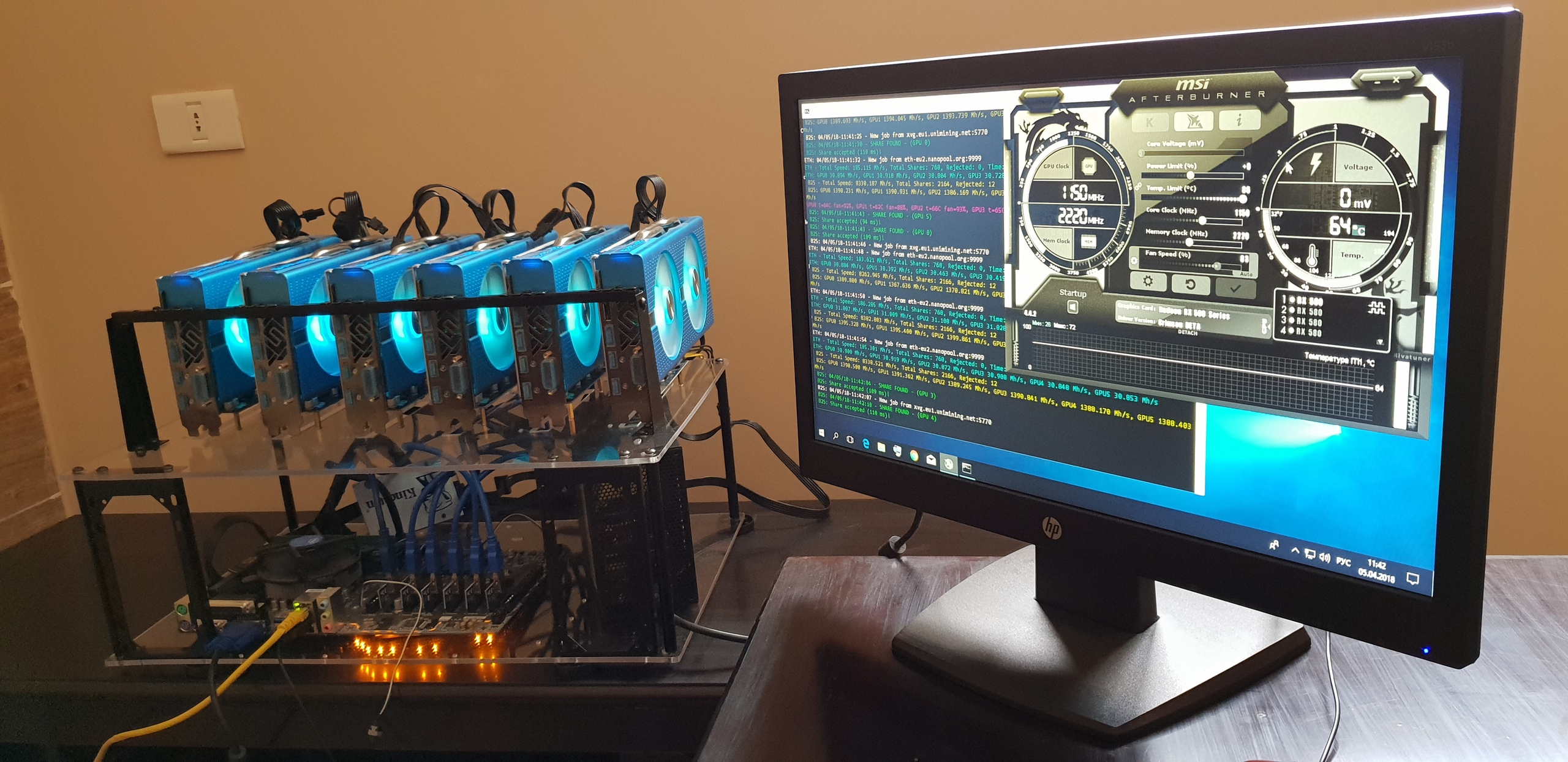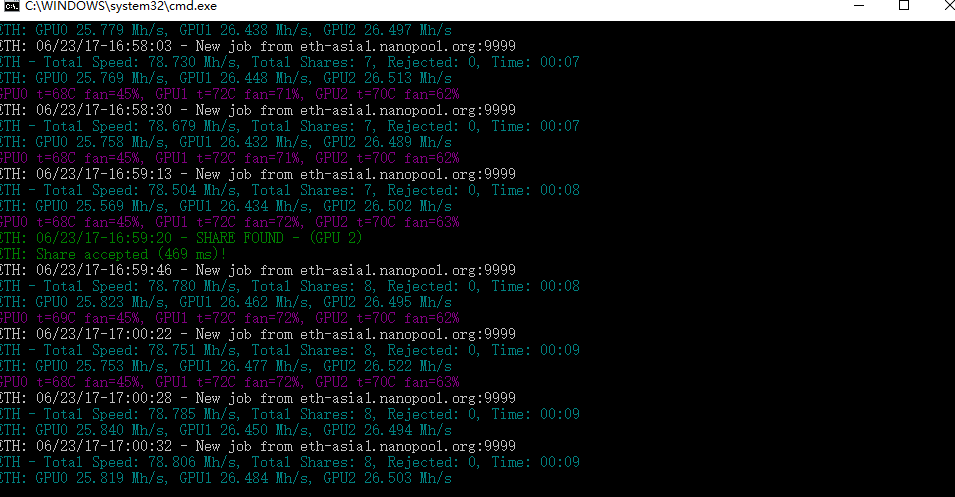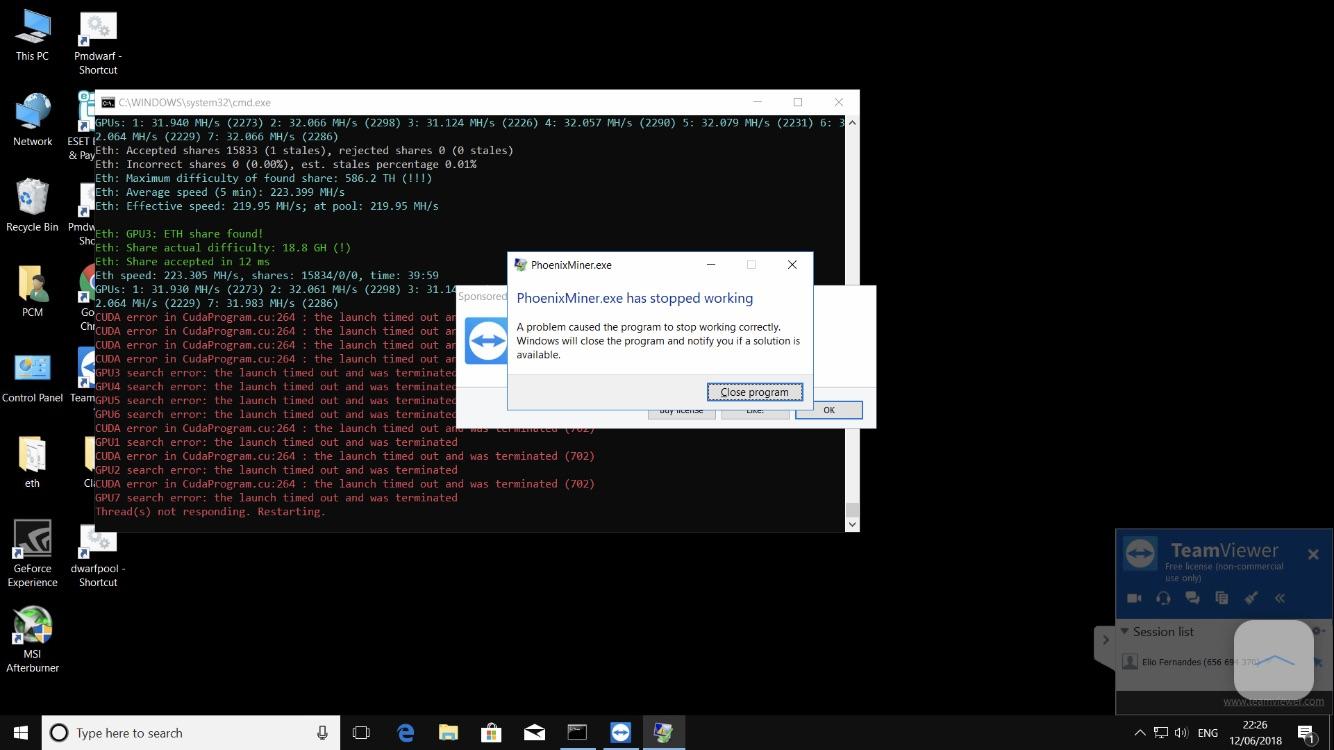May 14, 2020 Download EasyMiner for free. A CPU/GPU miner for Litecoin, Bitcoin, besides other cryptocurrencies. EasyMiner is mostly a graphical frontend for mining Bitcoin,Litecoin,Dogeecoin and other various altcoins by providing a handy way to perform cryptocurrency mining using a graphical interface. It supports both AMD and NVIDIA GPUs, and also CPU mining. Phoenix miner Is the fastest (possibly the fastest) miner based on the Ethash algorithm (Ethereum, ETC, etc.). The program is suitable for video cards from Nvidia and AMD (including mixed mining rigs). Phoenix has long been the second most popular miner, after the legendary miner Claymore's, whose support ended in 2020. This brings the possibility that the Phoenix miner's author wants to cover its tracks and disappear or even do something malicious. We have immediately disabled Phoenix miner from NiceHash Miner, and we advise everyone to stop using Phoenix miner immediately! Phoenix miner is a mining software from an anonymous author. Welcome to the How to video guide for Phoenix Miner on Windows. This is a complete how to Guide for downloading, Installation and configuration of the phoen. 1 Installation and Configuration Instructions SAS Enterprise Miner 5.2 This document describes three installation and configuration scenarios for SAS Enterprise Miner 5.2. PhoenixMiner is one of the most popular Ethash mining clients. It works on Nvidia and AMD rigs and Windows and Linux mining systems. PhoenixMiner is very easy to set up and besides Ethash mining it also supports Ubqhash and Etchash mining. The dev fee for using this miner is 0.65% - every 90 minutes the miner will mine for developers for 35.
Phoenix miner Is the fastest (possibly the fastest) miner based on the Ethash algorithm (Ethereum, ETC, etc.). The program is suitable for video cards from Nvidia and AMD (including mixed mining rigs). Phoenix has long been the second most popular miner, after the legendary miner Claymore's, whose support ended in 2020. It works under Windows x64 and Linux x64. By the way, about the commission they did it. The software charges only 0,65% of the computing power.
What algorithms does it support and what is mining
- ETCHash - Ethereum, Ethereum Classic, MOAC, Metaverse, Pirl and others;
- Dual mining with Ethash / ETCHash and Blake2s algorithms - other additional algorithms are not supported;
- ProgPoW - Bitcoin Interest (BCI)
- Ubqhash - Ubiq
Requirements for mining on Phoenix miner
Suitable for cards from two leading manufacturers AMD и Nvidia.
- AMD - Vega series, 580, 570, 560, 480, 470, 460, 390, 290 and even earlier versions, provided the required amount of video memory on the card.
- Nvidia - 2080 ti, 2080,2070, 2060, 1080 ti, 1080, 1070 ti, 1070, 1060, 1050ti series and older models with sufficient VRAM.
Note that the mining software has proven itself well not only on top models of video cards, but also on already quite old ones. The software is able to squeeze the maximum hash rate out of them, while being as loyal as possible to the equipment itself, without overloading it and trying to avoid serious overheating that can disable the equipment.
The miner also requires Windows x64 (Windows 7, Windows 10, etc.) or Linux x64.
Download and install PhoenixMiner
You can download the latest version of PhoenixMiner 5.6d for Windows and Linux by clicking below:
Phoenix Miner Windows Download
The software does not require installation. You just need to unpack the downloaded archive to a convenient place on your hard disk and the program will be ready to be configured and launched.
Updates / Releases
Update v5.6d (Latest stable version)
- Fixed issue with displaying GPU temperature on some Nvidia graphics cards.
Update v5.6c
- Lower percentage of rejected / overdue solutions from video cards when mining on Nicehash
- Fixed problem with reading graphics card temperature with some AMD graphics cards / drivers.
- Latest AMD drivers for Windows 21.5.1 are already supported starting from 5.6b
- Other minor fixes and improvements
Update v5.6b
- Added support for displaying the access point (connection) of the video card and the temperature of the video memory for Nvidia video cards. Please note that the temperature of the video memory is displayed only by some video cards (3080, 3090, possibly 2080Ti).
- Parameters
-ttj,-ttmem,-tmaxjи-tmaxmemnow also work with Nvidia cards. - Added support for AMD drivers for Windows 21.4.1.
- Added support for AMD Linux drivers 21.10-1244864-ubuntu-18.04 and 21.10-1247438-ubuntu-20.04 (only use them with Polaris or older cards, or latest RX6x00 video cards, these drivers will not work with Vega, Radeon VII, or Navi maps)
Update v5.6a
- Added new kernels for AMD RX6700 graphics cards. They are faster than regular kernels and produce much fewer legacy solutions (share).
- Increased the maximum supported DAG file to 550 (will work until about January 2023)
- Full support for configuring clock speed, fan speed, voltage and memory timings for AMD RX6900 / 6800/6700 graphics cards
- The specific hash rate is now displayed as kilohash per joule (kH / J). Example: if a video card has a hash rate of 30 Mh / s with a power consumption of 100 W, the specific hash rate is 300 kH / J.
- Added new command line parameters
-ttjи-ttmem, allowing to automatically adjust the fan speed depending on the access point (connection) of the video card and the memory temperature, respectively. - Example:
-ttmem 83will keep the memory temperature of the graphics card at 83 ° C or lower, increasing the fan speed as needed. These options can be combined with -tt or with each other. These options are only supported by AMD graphics cards that report junction and memory temperatures. - New command line parameters -tmaxj and -tmaxmem have been added to reduce the use of the video card when the access point (connection) of the video card or the temperature of the video card memory exceeds the specified threshold values. These options are only supported by AMD graphics cards that report features and memory temperatures
- Added support for AMD drivers for Windows 21.3.2 and 21.3.1.
- Added support for AMD Linux 20.50.x drivers. Use these drivers only if you have Polaris graphics cards or older or newer RX6x000 graphics cards.
- WARNING: Vega, Radeon VII and Navi video cards will not work with these drivers!
- Disable the function zero fan on AMD cards whenever a fixed fan speed is used (e.g.
-tt -40), or when using an automatic fan with minimum fan speed (e.g.-tt 63 -minfan 35). To disable this feature, add the command line parameter -fanstop 1 - If Linux says
-mcdag 1, the miner will not wait for the daggen.sh script to complete before starting to create the DAG file. Instead, it will be for a fixed 7 seconds. This allows you to do all of the following in daggen.sh: disable overclocking on Nvidia graphics cards, sleep for 30-60 seconds to allow time for DAG generation, and then reapply overclocking on Nvidia graphics cards. - Other minor improvements and fixes
- Support
-ttj,-ttmem,-tmaxjи-tmaxmemfor Nvidia 3090 and 3080 video cards is not ready for release yet.
- Support
Update v5.5c
- Added native kernels for AMD RX6800 and RX6900 GPUs. They are faster than
regular kernels, and produce much less legacy stakes. - Updated cores for AMD Polaris, Vega and Navi GPUs that are slightly faster and more consuming
less energy than before when mining ETH. To use these updated kernels you need to use
drivers 20.5.1 or newer under Win10 or 20.10.x or newer under Linux. - Nvidia mining cards (P106, P104, etc.) can now use straps and hardware control options
(power limitation, memory overclocking, maximum temperature, etc.) Under Windows. - Added support for the latest AMD driver for Windows 21.1.1.
- Added a new parameter -mcdag to reset memory overclocking on Nvidia cards during
DAG generation. This may allow you to set higher memory overclocking on your Nvidia cards.
without risking messing up the DAG buffer, which can lead to an excessive amount of incorrect shared
resources. Use -mcdag 1 (default is 0, which means off) to use this
new feature. - The -tt parameter is now only for controlling fan behavior. For example -tt 60 sets
automatic fan speed with a set temperature of 60 ° C; -tt -70 sets the fixed fan speed to 70%; and
-tt 0 disables fan control. All of this can be specified for each GPU. - There is a new parameter -hwm that allows you to control the frequency of the hardware
monitoring, which was also done with -tt in previous versions of PhoenixMiner. - Added support for AMD Linux drivers 20.45-1164792 and 20.45-1188099. Use these drivers,
only if you have an RX6800 or RX6900 GPU. WARNING: Vega and Navi GPUs will not work with these
drivers! - Automatically install -ttli instead of -tmax if later version is not supported
driver. This will cause the GPUs to slow down when they reach the set temperature,
to avoid overheating. - Other minor improvements and fixes
Video review and setup PhoenixMiner
How to set up PhoenixMiner
Setting up the subtleties of mining is carried out by making changes to the bat file. The folder contains an example of settings, by analogy of which you can easily create your own batch file.
Example of PhoenixMiner settings (bat-file)
The miner is launched using the command line in the Linux operating system or a bat file in Windows. Below are examples of bat files for each of the cryptocurrencies that can be mined with the Phoenix miner. Remember to replace YOUR_ADDRESS with your wallet address and RIG_ID with your farm name. The name you can choose yourself is absolutely arbitrary, it should contain only the letters of the English alphabet and the signs “-” and “_”. The wallet must be specified for the cryptocurrency you are mining
Ethereum
PhoenixMiner.exe -pool eu1.ethermine.org:2020 -wal YOUR_ADDRESS -pass x -worker RIG_ID -coin eth
MOAC

PhoenixMiner.exe -pool moac.clona.ru:2026 -wal YOUR_ADDRESS -pass x -worker RIG_ID -coin moac
DubaiCoin
PhoenixMiner.exe -pool dbix.clona.ru:5081 -wal YOUR_ADDRESS -pass x -worker RIG_ID -coin dbix
Metaverse ETP
PhoenixMiner.exe -pool etp.2miners.com:9292 -wal YOUR_ADDRESS -pass x -worker RIG_ID -coin etp
Callisto Network

PhoenixMiner.exe -pool clo.2miners.com:3030 -wal YOUR_ADDRESS -pass x -worker RIG_ID -coin clo
Expanse
PhoenixMiner.exe -pool exp.2miners.com:3030 -wal YOUR_ADDRESS -pass x -worker RIG_ID -coin exp
Ethereum Classic
PhoenixMiner.exe -pool etc.2miners.com:1010 -wal YOUR_ADDRESS -pass x -worker RIG_ID -coin etc
Setting up a batch file for Ethereum
- PhoenixMiner.exe - this key indicates which program will be launched. We leave it as it is
- -pool eu1.ethermine.org - pool server. Change to another pool or leave ethermine
- : 4444 pool port. Indicated after the colon
- -whale Is the address of your digital wallet
- -worker Rig1 Is the name of your farm worker. Used for the convenience of tracking statistics on the pool. You can specify any
- -pass x - password on the pool. Almost never used on pools. X means no password
- -log 0 - is responsible for maintaining the miner's event log. 0 - means not to keep a journal. If you put -log 1, then the log will be kept without showing debug messages on the screen, if -log 2 - write log and display debug messages on screen
- -tt 70 - setting the target temperature of the fan control (special values: 0 - no control on all cards, 1-4-only monitoring on all cards with an interval of 30-120 seconds, negative values - fixed fan speed (in%)
- -tstop 85 - means that the video card will be suspended when the temperature reaches 85 °
- -tstart 70 - means that the card will start again when its temperature drops to 70 °
- -fanmin 30 - the minimum rotation speed of the video card fans. It is recommended to put at least 30 in case MSI Afterburner or other software does not start the equation with fans
- pause - means that if you configure something incorrectly, the miner will not close immediately, but will display an error code
Phoenix miner advanced options
Running a mining program sometimes requires additional settings, for example, you need to turn off one of the cards or set a limit for the operating temperature of the card. Below we have prepared for you a list of the most popular Phoenix miner settings. To apply a setting, add it to the standard startup line above.
ssl:// for mining using SSL, add this parameter before the pool address. If the pool address is fully registered, starting with https: //, then just replace https: // with ssl: //. Note that typically the SSL pool address is different from the non-SSL pool address. Example eth.2miners.com:12020 (Ethereum pool 2Miners for SSL connection).
-gpus allows you to use only the necessary video cards for mining. After -gpus, specify the indices of the video cards that you want to use, while the first video card has an index of 1. For example, if you have a rig of 6 video cards, the indices of the video cards go from 1 to 6. Adding a parameter -gpus 12356 will start mining on all video cards except the fourth. If you have more than 10 video cards, their indices must be separated by commas.
-amd uses only AMD graphics cards for mining.
-nvidia uses only Nvidia video cards for mining.
-eres sets the number of mining epochs for which memory is reserved for creating a DAG file. The default is 2 epochs. for example -eres 3 reserves memory 3 epochs ahead. The larger the parameter, the less often the video card needs to allocate memory. If the memory size of your video card is almost equal to the size of the DAG file, it is recommended to use the minimum values.
-log the parameter regulates the creation of a log file. 0 - a log file is not created, 1 - a log file is created, but messages for debugging are not displayed on the screen, 2 - a log file is created and messages are displayed on the screen. By default, the program uses the parameter -log 1
All the parameters of the video cards can be specified not only for all the video cards of the rig together, but also for each of the video cards separately. To do this, specify the values separated by commas. for example -fanmax 70 sets the maximum fan speed of 70% for all video cards together, and -fanmax 70, 80, 90 sets maximum rotation of 70% for the first video card, 80% for the second, and 90% for the third.
-fanmin minimum rotational speed of video card fans in percent. For example the parameter -fanmin 50 indicates to the miner that the fans should spin at a speed of at least 50% of the maximum possible.

-fanmax maximum rotational speed of video card fans in percent. For example the parameter -fanmax 95 indicates to the miner that the fans should spin at a speed no more than 95% of the maximum possible.
-tt the parameter sets the desired operating temperature for video cards. For example, when -tt 65 the program will try to keep the temperature of the video cards at 65 ° C. -tt 0 disables temperature monitoring of video cards. Please note that this parameter can also be used to set a constant rotation temperature of the fans of video cards, for this, a minus is put in front of the number. For example -tt -75 will force the fans of all video cards to rotate at 65% of the maximum possible. Don't be confused with the team -tt 75 which will keep graphics cards at 75 ° C.
Phoenix Miner Windows 10
PhoenixMiner allows you to configure the overclocking parameters of the video card in the miner launch line. To set the default values, use the number 0 for each parameter.
-powlim sets the maximum power consumption of the video card (power limit) as a percentage from -75 to 75. For example -powlim 50 Remember that this and other fine tuning parameters can be set for each of the video cards separately, for example -powlim 50 0 60 tells the program that the power limit value for the first video card is 50, for the third one is 60, and for the second video card it should use the default value.
-cclock adjusts the core clock in MHz. For Nvidia graphics cards use relative values like -200, +300, etc. for example -cclock +100
-cvddc sets the voltage supplied to the video card core (core voltage) in mV. For Nvidia graphics cards use relative values like -200, +300, etc. for example -cvddc +200
-mclock adjusts the frequency of the video memory of the video card (memory clock) in MHz. for example -mclock 1400
-mvddc sets the voltage supplied to the memory of the video card (memory voltage) in mV.